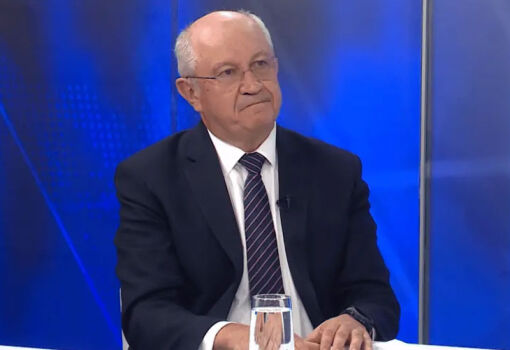
Thus, the weighted average interest rate on newly issued loans, according to the National Bank, amounted to 8.47% and on deposits – 4.14% per annum, increasing by 0.21 and, respectively, 0.98 p.p., compared to the fourth quarter of 2024. Consistent growth of interest rates in the banking sector since the beginning of the year led to a slight slowdown in lending.
Banks, facing increased risks, are likely to continue experimenting in an attempt to stem the outflow of money from the banking system. Investment instruments are not so profitable anymore. And accumulating excess liquidity due to falling demand is a matter of crisis of confidence in the system. Inflation expectations are still quite high. And money should work.
In April, the evolution of the bank loans market continued the downward trend in the volume of loans and their appreciation. According to NBM data, the April volume of newly granted credits amounted to 6,781.7 million lei, 8.1% less than in March. Most of them (73.7%) were represented by ??credits in national currency, which amounted to 4,996.3 million lei, down 9% from the previous month.
In terms of terms of issuance, the most demanded were credits with the term from 2 to 5 years, their share in the total volume of issued credits amounted to 58,5%. The volume of these loans granted to legal entities amounted to 40% of the total volume.
The average nominal rate on newly issued loans in national currency increased by 0.40 p.p., compared to the previous month, and amounted to 9%. And the average rate on loans in foreign currency decreased by 0.12 p.p., amounting to 5.5%.
In April 2025, individuals took loans worth 2,251.1 million lei, down 2.6 percentage points from the previous month. Most of them (59.4%) were granted for consumer purposes. Most of them (1,188.0 million lei) were issued in national currency for terms from 2 to 5 years.
As compared to the previous month, in April legal entities applied for a smaller volume of credits in national currency (-12,5%). The volume of foreign currency loans decreased by 5.3%, while those linked to the exchange rate – by 26.9%.
The majority (60.2%) of new loans granted were received by non-financial companies.
The average rate on loans granted to legal entities in the national currency rose to 8.74%. The average rate on loans issued in foreign currency decreased to 5.49%.
It is becoming more difficult to maintain the stability of the financial system under conditions of high uncertainty, on the one hand, and to count on the loyalty of depositors and borrowers, on the other. The indicators of monetary synthesis instruments published by the regulator show a tendency to prevailing outflow of funds from the banking system.
From January to April 2025, cash withdrawals exceeded receipts by more than 1 billion lei, the NBM said. Although the total volume of accumulated cash receipts in the reporting period increased year-on-year to about 56 billion lei (+3.5%), the regulator recorded a significant decrease in revenues from other services (-9%: services of ANRE, realtors, foreign exchange operations, etc.).
Cash proceeds from the sale of consumer goods (irrespective of the sales channel) increased significantly on bank accounts – by more than 1 billion lei (+3.4%), amounting to 31,506.7 million lei. This is 56.6% of the total volume of receipts.
Also, a significant increase was recorded in the receipts from current accounts and deposit accounts of individuals – by 818.2 million lei (+15.8%) and revenues from rent and public utilities in the amount of 273.9 million lei (+48.8%). Cash contributions for loans repayment increased by 128 million lei (+7.6%).
The volume of cash withdrawals from banks’ cash offices in January-April 2025 increased by 2,908.0 million lei (+5.4%) compared to the same period of the previous year and amounted to about 57 billion lei. At the same time, the NBM registered in April a quantitative growth of money in circulation. The money supply increased by 17% year-on-year, they calculated.
Unfortunately, the increase in the amount of cash does not fit in any way into the algorithm of stabilization of Moldovan business activity under the conditions of cash circulation limitation. More to the point, the reduction of the credit portfolio has a number of key economic consequences. It means less funds for investment, consumption and, ultimately, economic growth.













